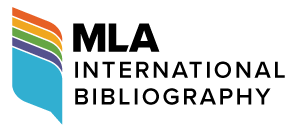The Magic World of Orson Welles. James Naremore. Urbana, Chicago, and Springfield: University of Illinois Press, 2015 (340 pages). ISBN: 9780252081316.
Shannon Scott
James Naremore’s The Magic World of Orson Welles reveals its subject not through biographical information, or juicy Hollywood anecdotes, but through insightful criticism of Welles’s work as a director, writer, actor, and “Renaissance man”. The reader familiar with Welles’s oeuvre will gain a deeper understanding of his distinctive visual techniques, the historical contexts of his films, and the breadth of his canon, including works in their nascent stages, cut scenes, films that remain unfinished, and scripts that were occasionally abandoned but more often rejected by Hollywood studios.
The first edition of The Magic of Orson Welles was published in 1978, the second in 1989, and the third in 2015, celebrating the centennial year of Welles’s birth. Michael Wood, reviewing a cluster of new Orson Welles biographies in The New York Review of Books, notes the tendency towards largesse in their proportions: “There is a special risk in writing about Orson Welles. The dimensions may get a little out of hand, as if they had to mime the physical size and imaginative reach of the subject” (25). Naremore, however, provides thorough scholarship that never seems sparse yet manages to come in at under 350 pages—hardly a cumbersome amount for a Byronic figure whose personality and career were larger than life.
Naremore’s admiration for Welles as an artist and experimenter is evident from the introduction where we begin with Welles’s death: “He was found with his typewriter in his lap, working until the very end” (1). Welles’s passion for the creative process, and not necessarily the created product, is what engaged him as a filmmaker—it’s also what made Hollywood, with its emphasis on completion and financial success, so challenging for Welles. Early in the text, Naremore concentrates on the diversity and sheer volume of projects Welles worked on in his waning years—from The Magic Show to Don Quixote to King Lear. The body of the biography is then bracketed by two of Welles’s more outrageous public stunts: his broadcast of The War of the Worlds and the screening of excerpts from his unfinished film, The Other Side of the Wind, a blistering critique of Hollywood’s lack of originality, which Welles screened for an audience at the American Film Institute when he was honoured with the Lifetime Achievement Award.
Organised mainly in chronological order, with the exception of Welles’s films outside of America, Naremore starts by exploring Welles as “The Prodigy”. Without going into depth on Welles’s childhood, Naremore acknowledges the influence of a bon vivant father and a musically gifted, politically active mother, both of whom had passed away by Welles’s early teens. Also explored within this chapter are Welles’s time at the Gate Theatre in Dublin, his fledgling efforts and limitations as a screenwriter, specifically with the play Bright Lucifer, and his early fascination with and esteem for Nietzsche, Shakespeare, gothic melodrama, and Houdini. Greatly enhancing our perception of the young Welles, Naremore includes script segments that reveal Welles’s progression as a screenwriter as he gains confidence and daring with his subjects and characters.
The complexity increases as Naremore charts Welles’s work for the Mercury Theatre in New York. The stage is set, literally, in a community of thriving theatre collectives—the result of Roosevelt’s commitment to subsidising artists with the New Deal. Although Welles had much success with the liberal Mercury group, it was decided that audiences were not ready for a production of Marc Blitzstein’s The Cradle Will Rock. In response, Welles and John Houseman staged an “improvised performance” in the Venice Theatre that led to Welles’s resignation and Houseman’s termination (27). Welles’s reputation as a rebel was solidified. The focus then shifts to Welles’s career in radio, where his achievements were due not only to his resonant baritone, but to his impressive knowledge of classic literature and his genuine desire to share that knowledge with the masses. During this time, he and Howard Koch adapted H. G. Wells’s The War of the Worlds, which aired on the night before Halloween in 1938. The broadcast, particularly the fake news bulletins featured in the first half, threw some listeners into a panic over a possible invasion by Martians. Welles took responsibility, leading to fame and infamy; his reputation as a rebel was now transformed into that of a prankster.
Naremore’s chapter, “The Magician”, highlights Welles’s skills as an illusionist in Citizen Kane (1941). Welles’s signature visual style—his wide-angle, deep-focus photography—is analysed in detail and accompanied by stills that further enrich our awareness of Welles’s “magic”. For example, Naremore meticulously deconstructs the scene where young Kane plays outside, framed in the window, while inside Mrs. Kane signs away her son’s future to Thatcher. (The prankster aspect of Welles’s character is still in evidence as young Kane shouts, “The Union forever!” while frolicking in the snow.) In the end, it took Welles and Gregg Toland four days to shoot the scene correctly. Regarding his use of deep focus, Welles quipped: “Well, in life you see everything at the same time, so why not in movies?” (51). Yet Naremore points out that viewers can’t possibly keep “both the extreme foreground and extreme distance in focus at the same time” (51). Thus Welles’s style has less to do with realism, as he claims, than with illusion—the sense that even though we are watching the magic trick closely, through misdirection and sleight of hand, Welles will always leave us startled, as if watching a dove disappear into thin air.Naremore notes Welles’s other cinematic techniques, such as the use of wide-angle camera shots, which had already been utilised by directors like John Huston, Welles’s friend and collaborator. The effect and influence of German expressionism in the visuals of Xanadu are also examined, as is the use of “pan sound”, or layered sound, where multiple dialogues overlap, further disorienting viewers. Although Welles was allowed more autonomy with Citizen Kane than he would be in subsequent films made for Hollywood, Naremore looks closely at editing, discussing a scene that was cut from the original due to content, where Kane’s friend, Jedediah Leland (Joseph Cotton), is taken to a bordello in a failed attempt to interest him in women. However, Leland’s assessment of Kane, if not his latent homosexuality, does remain in the film—his belief that when Kane “can no longer ‘look after’ the little people, he begins to hate them” (89).
The narrative of Citizen Kane is explored both in terms of its autobiographical elements (Naremore claims that “most of [Welles’s] films are about tyrannical egoists, men who try to imitate God”, echoing the personality of the filmmaker himself), as well as the real-life inspiration for Charles Foster Kane, the newspaper mogul William Randolph Hearst (63). Illustrating the duality of Kane, Naremore reveals a fascinating series of doubles, such as Kane’s two wives, his two significant friendships, and his two sleds—the first named Rosebud, the second aptly named “Crusader”. While attention is given to Citizen Kane’s famous montages—the iconic opening “snow globe” sequence and the breakfast-table sequence with Kane’s first wife, Emily Norton—Naremore chooses to focus more heavily on “News on the March”, specifically the use of documentary-style footage that makes the viewer a voyeur as the camera infiltrates Kane’s private life. In addition, the “footage” is studied as a parody of the type of news actually produced by Hearst.
For Naremore, the historical context of Citizen Kane ultimately eclipses the stylistic details. For example, Kane’s approval of the Spanish–American War and his denial of the coming Second World War, signified in a shot of Kane chatting on a balcony with Hitler, prove essential to both character and context. Naremore writes: “What is more important to remember about a character like Kane is not how the loss of a sled influenced his life, but how the newspapers published by his real-life counterpart Hearst might have influenced a war” (92). No doubt this sentiment was Welles’s own as he experienced the fallout of portraying a still-living man, who, in addition to running a newspaper empire, also held significant power in Hollywood. As a result, Welles faced a backlash that made finding work difficult and led to an investigation by the FBI, which lasted a decade after the release of Citizen Kane.
After Citizen Kane, three of Welles’s films for RKO were “sabotaged”, leading to a low point in Welles’s career. Naremore concentrates on the adaptation of Booth Tarkington’s The Magnificent Ambersons (1942), which the Mercury group had performed previously on the radio. Through The Magnificent Ambersons, Naremore demonstrates the importance of a director having control over the final cut. Although the film contains wonderfully gothic and “grotesque visuals”, along with a hat montage that cleverly reveals the family’s upper-class status through time, The Magnificent Ambersons is ultimately marred by its editing and saccharine ending. Without Welles’s approval, the film was reduced by forty-five minutes and new material was added. The Ambersons’ mansion, later used in It’s a Wonderful Life, took up three sound stages, the filming of its seven meticulously decorated rooms providing an essential tour early in the film. However, this too was cut from the final version. Naremore provides three sources to help scholars reconstruct the film as Orson Welles originally intended it, but The Magnificent Ambersons effectively illustrates RKO’s marked interference in Welles’s filmmaking.
After the failure of The Magnificent Ambersons, Naremore moves to Welles’s directing in the 1940s, specifically two films, The Stranger (1946) and The Lady from Shanghai (1947). Originally slated as a low-budget thriller for Columbia Pictures, The Lady from Shanghai transitioned into a “big budget vehicle for Rita Hayworth” (137). Welles, who also plays leading man, Michael O’Hara, with a full-on Irish brogue, was given more autonomy as a director, although the final cut was turned over to Viola Lawrence. The famous “Magic Mirror Maze” sequence is intelligently scrutinised, as is the montage of Hayworth and Arthur Bannister (Everett Sloane). Naremore’s pleasure in critiquing the overacting of nearly every cast member is contagious. He composes a few lines of purposefully overwritten prose as if to join in on the fun: Hayworth’s Elsa becomes a “shanghaier of sailors, a Sternbergian Circe who lures an Irish Ulysses onto the rocks with her wet swimsuit, or who sings an incredibly bad song that turns O’Hara into a zombie” (146). Although the film was a financial failure, and for Welles, personally, the end of his marriage to Hayworth, the dazzling visuals that occur in the dénouement still possess Welles’s signature magic.
The chapter on Touch of Evil (1958) reflects on Naremore’s decision, as a film scholar and professor, to show his students Touch of Evil as opposed to Citizen Kane because Citizen Kane’s “canonicity has become a burden”, but also because Touch of Evil is a captivating and complex film (2). Furthermore, Welles’s performance as Quinlan, the crooked American cop, is considered in some ways “superior” to his performance as Kane (162). It was Welles’s first American film in a decade, and it challenges the social and political issues of the fifties: “racism, police corruption, and sexual confusion”, as well as the entire concept of “artistic respectability” (159). Like much of Welles’s previous work, Touch of Evil has multiple versions, and Naremore uses the “restored” one released by Universal in 1998. While Welles plays a somewhat sympathetic, perhaps even pitiable villain, Charlton Heston plays Mike Vargas, a hero whose political beliefs are more in sync with Welles’s own. While Naremore praises Welles’s ability to capture, or create, the atmosphere of the fictional border town of Los Robles, his exploration of the female characters will prove especially illuminating to those studying film and gender. Contrasting Susan Vargas (Janet Leigh) with Tanya (Marlene Dietrich), Naremore reveals the “sexual psychology of race hatred” (170). The camera also serves as point of view, leading audiences to experience Susan’s nightmarish experience (later discovered not to be rape, although all signs suggest sexual assault) at the Mirador Motel, as opposed to simply witnessing it passively. Examined as sophisticated pulp, a Latin-flavoured noir, Naremore shows how Touch of Evil parallels the ending of Raymond Chandler’s The Big Sleep—it’s a brilliant comparison, revealed like a card well hidden up his sleeve.
Welles’s lifelong obsession with Shakespeare comprises a noteworthy segment of Naremore’s biography. During Welles’s career, he staged a low-budget version of Macbeth (1948), adding a new character, the Holy Father (Alan Napier), and a deeply expressionistic visual style. Although Welles’s adaptation was ahistorical, the actors used Scottish accents that were later redubbed. He also directed Othello (1952), transformingIago into an impotent schizophrenic. Ultimately, Welles’s Shakespearean ambitions culminate in Chimes at Midnight (1966), which combines a number of Shakespeare’s historical plays, namely Richard II, Henry IV, and Henry V. In the film, Welles plays Falstaff, “resembling a filthy Santa Claus” (238). Naremore makes it clear why Chimes is widely considered by critics to be Welles’s most audacious and rewarding adaptation of Shakespeare.
Welles’s European films, most of which he financed himself, are similarly given their due; however, they often stand in stark contrast to his American films. Although Welles had limited freedom within the Hollywood studio system, Mr. Arkadin (1955) is described as a “burlesque of his own earlier work” (198). Welles plays Gregory Arkadin, another tycoon with a hidden past, but unlike Charles Foster Kane, Arkadin is given little depth: “the movie generate[s] its most impressive effects at the level of imagery rather than content” (204). This is a far cry from Citizen Kane, which may have used “impressive effects”, but never lost the capacity to tell a good story. Similarly, Welles’s adaptation of Kafka’s The Trial (1962) had a little more critical success, yet, in the end, it mainly serves to highlight the differences between the two artists. While both had a “love of grotesque, satiric visions”, Welles, unlike Kafka, “may have been pessimistic, but he was never truly despairing” (213). For those invested in Welles’s entire canon, there is a thought-provoking analysis of F for Fake (1975),which is largely made up of François Reichenbach’s documentary footage, and The Immortal Story (Histoire immortelle, 1968), which is based on a story from Karen Blixen’s Anecdotes of Destiny.
Perhaps most fascinating about Welles, besides the “magic” he worked as a filmmaker, were his strong political views reflected in his regular editorial columns for the New York Post. Welles’s goal to perpetuate New Deal social legislation, his concern with American foreign policy, and racial oppression reveal a patriot deeply invested in the future of his country. This drive for equality and liberal social policies creates a somewhat surreal portrait in light of Welles’s commercials for Jim Bean Whiskey and Paul Masson wine. “We will sell no wine before its time”, says the massive man in the commercial, who was himself well ahead of his time.
References
1. Blixen, Karen. Anecdotes of Destiny. London: Penguin Books, 1986. Print.
2. Chandler, Raymond. The Big Sleep. New York: Knopf, 1939. Print.
dThe Cradle Will Rock. By Marc Blitzstein. Dir. Orson Welles. Venice Theatre, New York City. 16 June 1937. Performance.
4. It’s a Wonderful Life. Dir. Frank Capra. Liberty Films, 1946. Film.
5. Kafka, Franz. The Trial. Trans. Willa and Edwin Muir. London: Secker and Warburg, 1935. Print.
6. “King Lear.” Omnibus. CBS. 18 Oct. 1953. Television.
7. Welles, Orson, dir. Chimes at Midnight. Alpine Films, 1965. Film.
8. ---. Citizen Kane. RKO, 1941. Film.
9. ---. Don Quixote. El Silencio Producciones, 1992. Film.
10. ---. F for Fake. Janus Film, 1973. Film.
11. ---. The Immortal Story [Histoire immortelle]. Albina Productions, 1968. Film.
12. ---. The Lady from Shanghai. Columbia Pictures, 1946. Film.
13. ---. Macbeth. Mercury Production, 1948. Film.14. ---. The Magic Show. Producer Orson Welles. TV.
15. ---. The Magnificent Ambersons. RKO, 1942. Film.
16. ---. Mr. Arkadin. Mercury Production, 1955. Film.
17. ---. Othello. Mercury Production, 1952. Film.
18. ---. The Other Side of the Wind. Royal Road, 2015. Film.
19. ---. The Stranger. International Pictures, RKO, 1946. Film.
20. ---. Touch of Evil. Universal Studios, 1958. Film.
21. ---. The Trial. Paris Europa Films, 1962. Film.
22. “The War of the Worlds.” The Mercury Theatre on the Air.Narr. Orson Welles. Columbia Broadcasting System. 30 Oct. 1938. Radio.
23. Wells, Herbert George. The War of the Worlds [1897]. Calgary: Broadview Press, 2003. Print.
24. Wood, Michael. “Looking for Citizen Welles.” The New York Review of Books 63.5 (2016): 25–7. Print.
Suggested Citation
Scott, S. (2015) The Magic World of Orson Welles, by James Naremore. Alphaville: Journal of Film and Screen Media, 11, pp. 105–110. https://doi.org/10.33178/alpha.11.07.
Shannon Scott is a Professor of English and Film at the University of St. Thomas. She has co-edited with Alexis Easley the collection Terrifying Transformations: An Anthology of Victorian Werewolf Fiction, 1838–1896 (2012). Shannon has also presented academic papers in London and Hatfield, UK, Chicago, IL, and Charlotte, NC. In 2015, her essay “Female Werewolf as Monstrous Other in Honoré Beaugrand’s ‘The Werewolves’” was published in She-Wolf: A Cultural History of the Female Werewolf by Manchester University Press.









